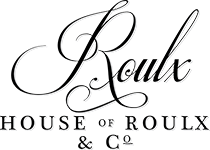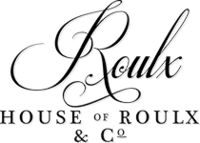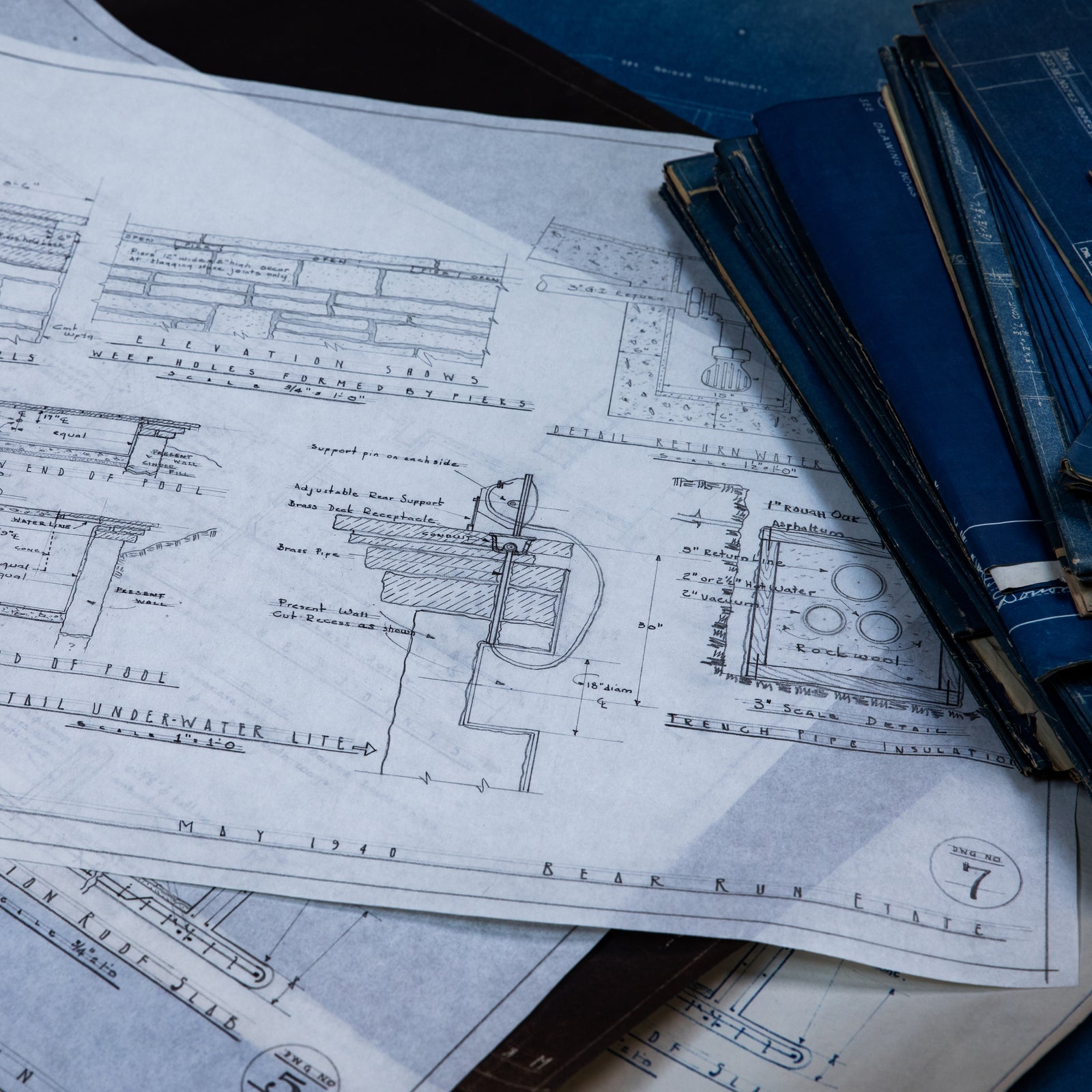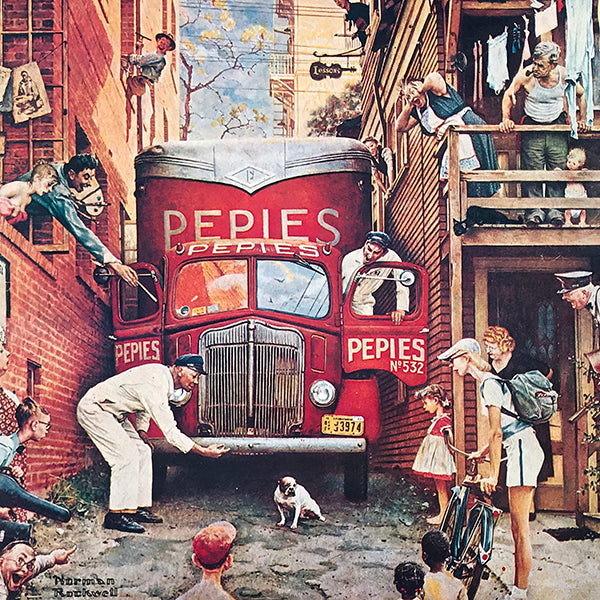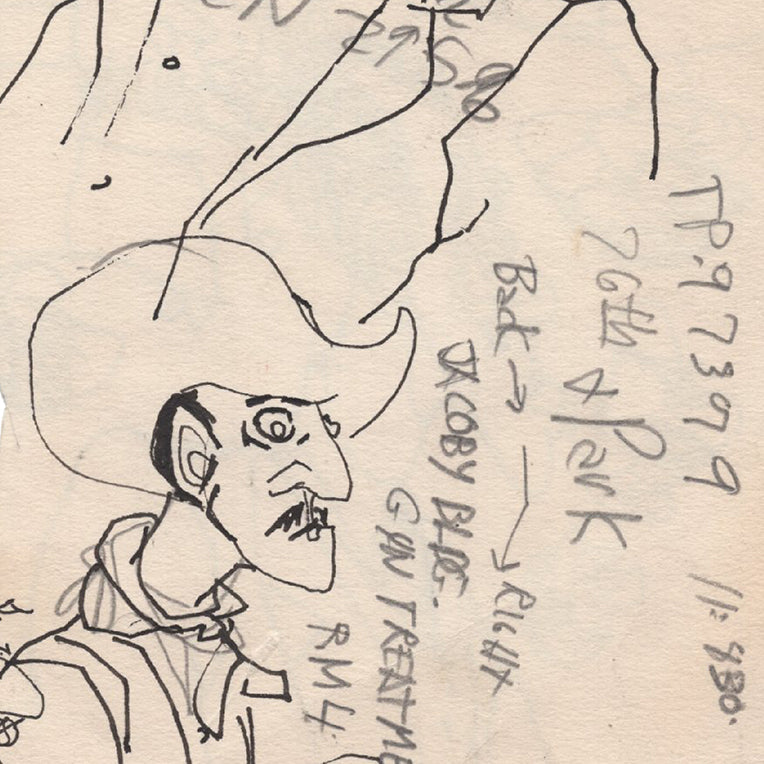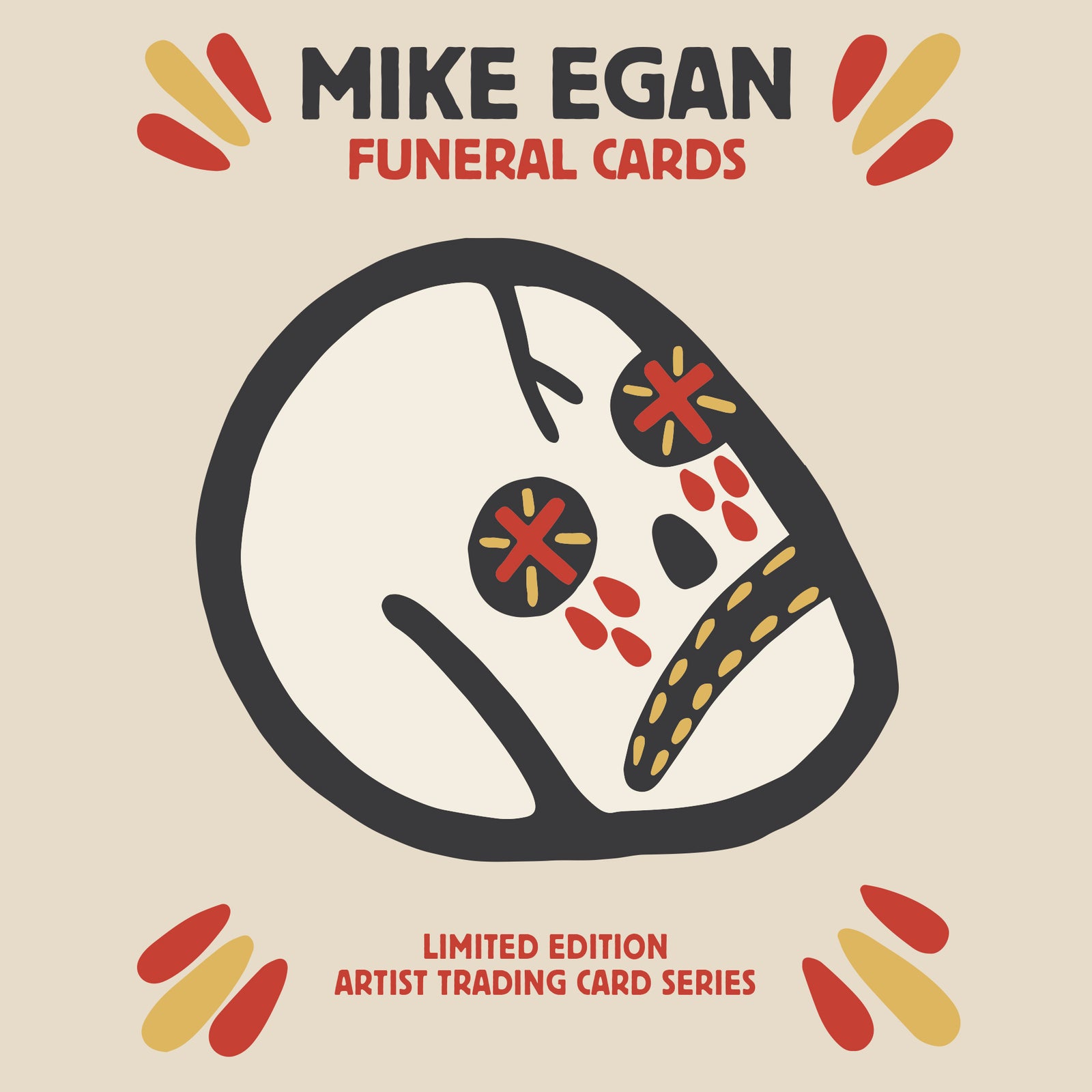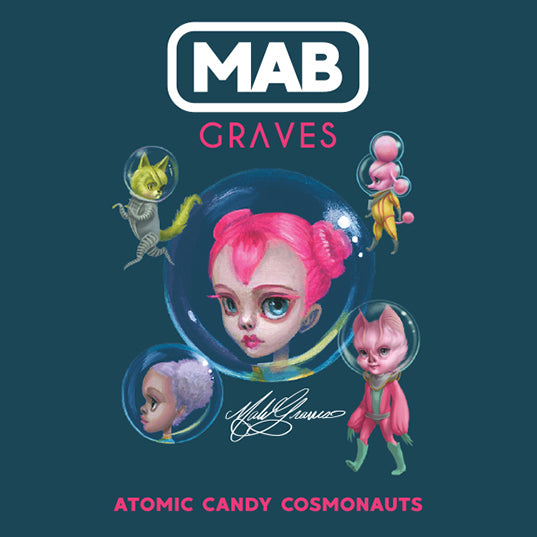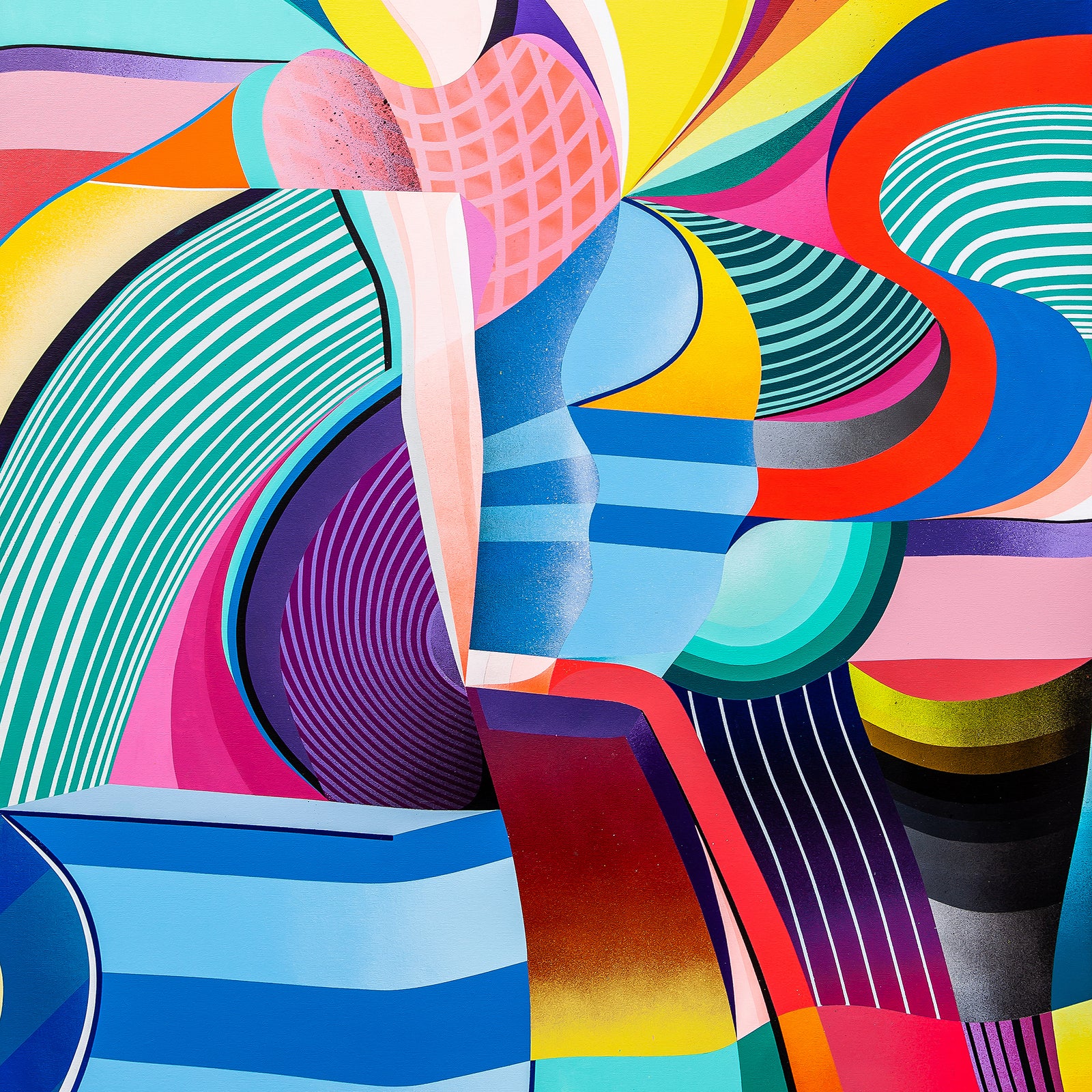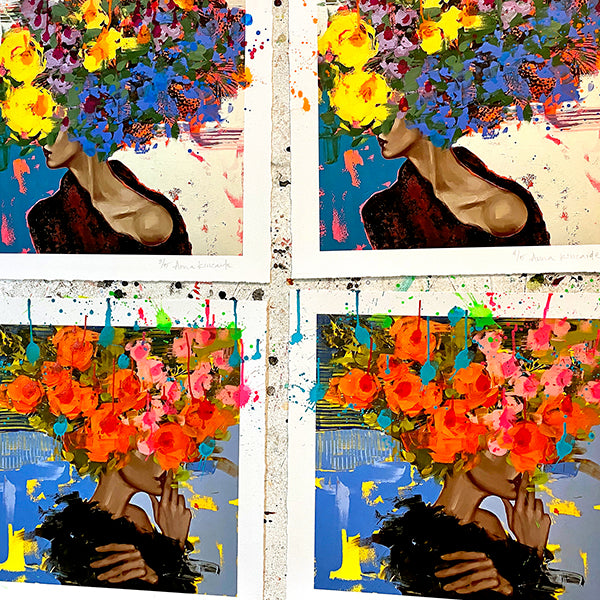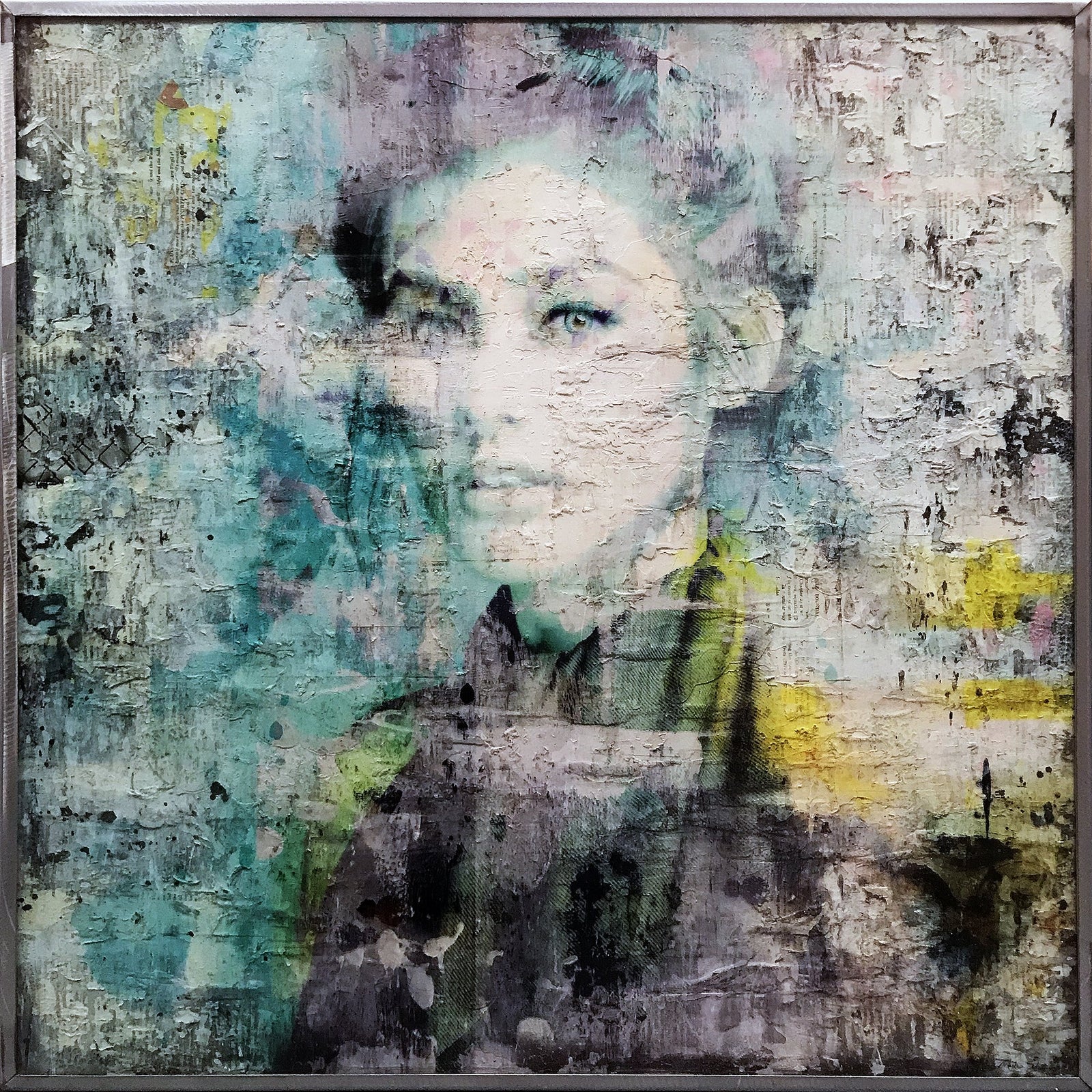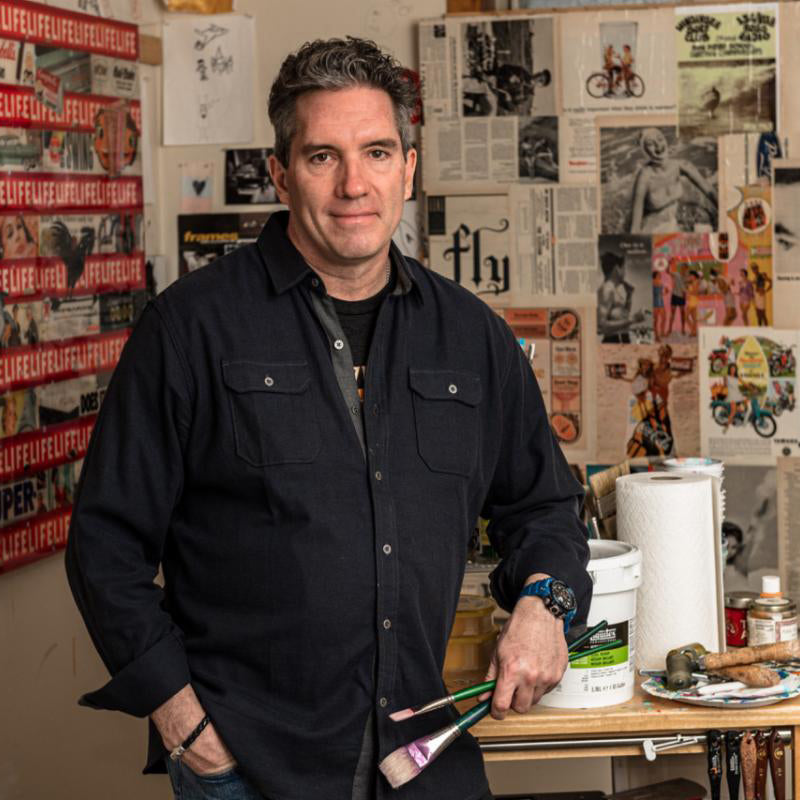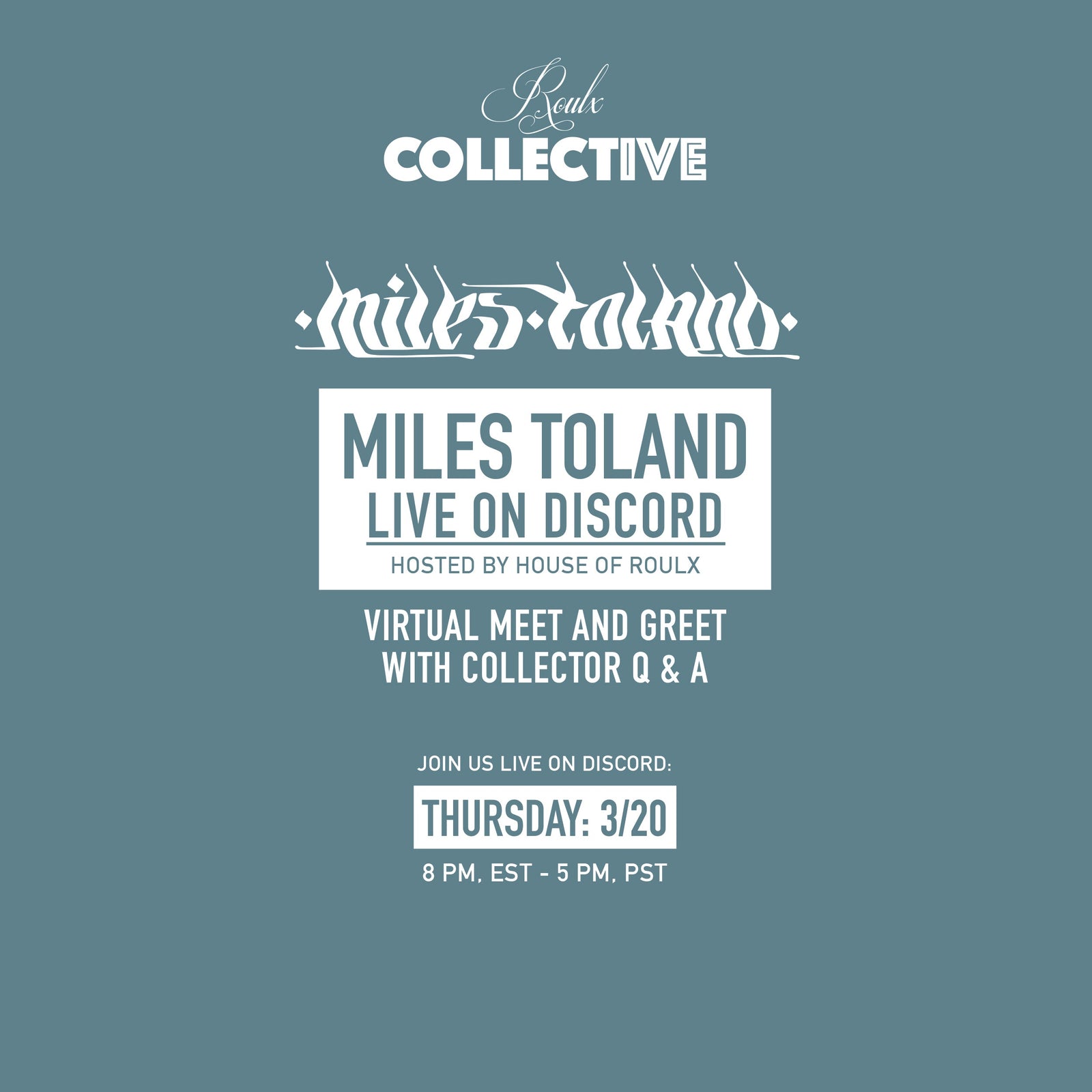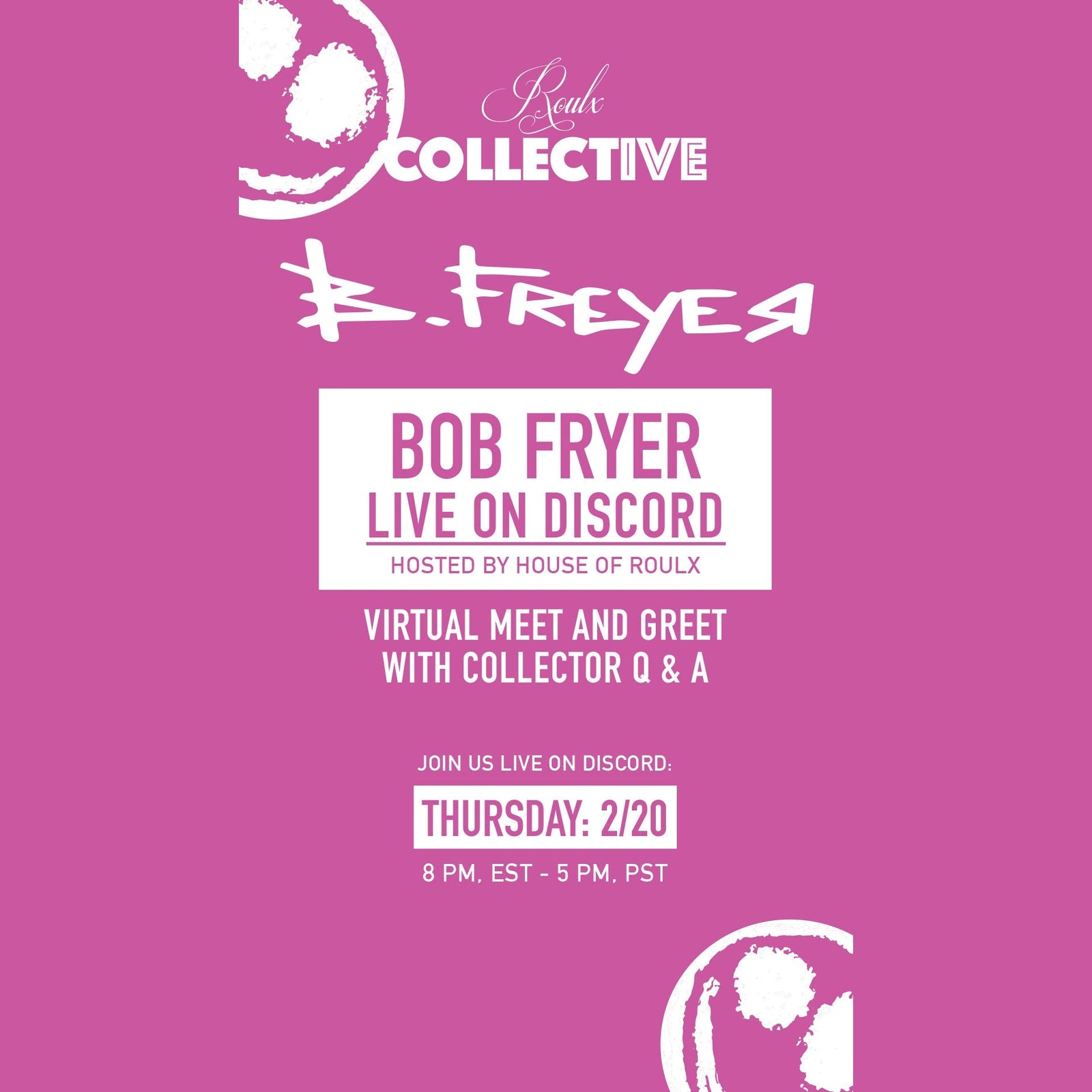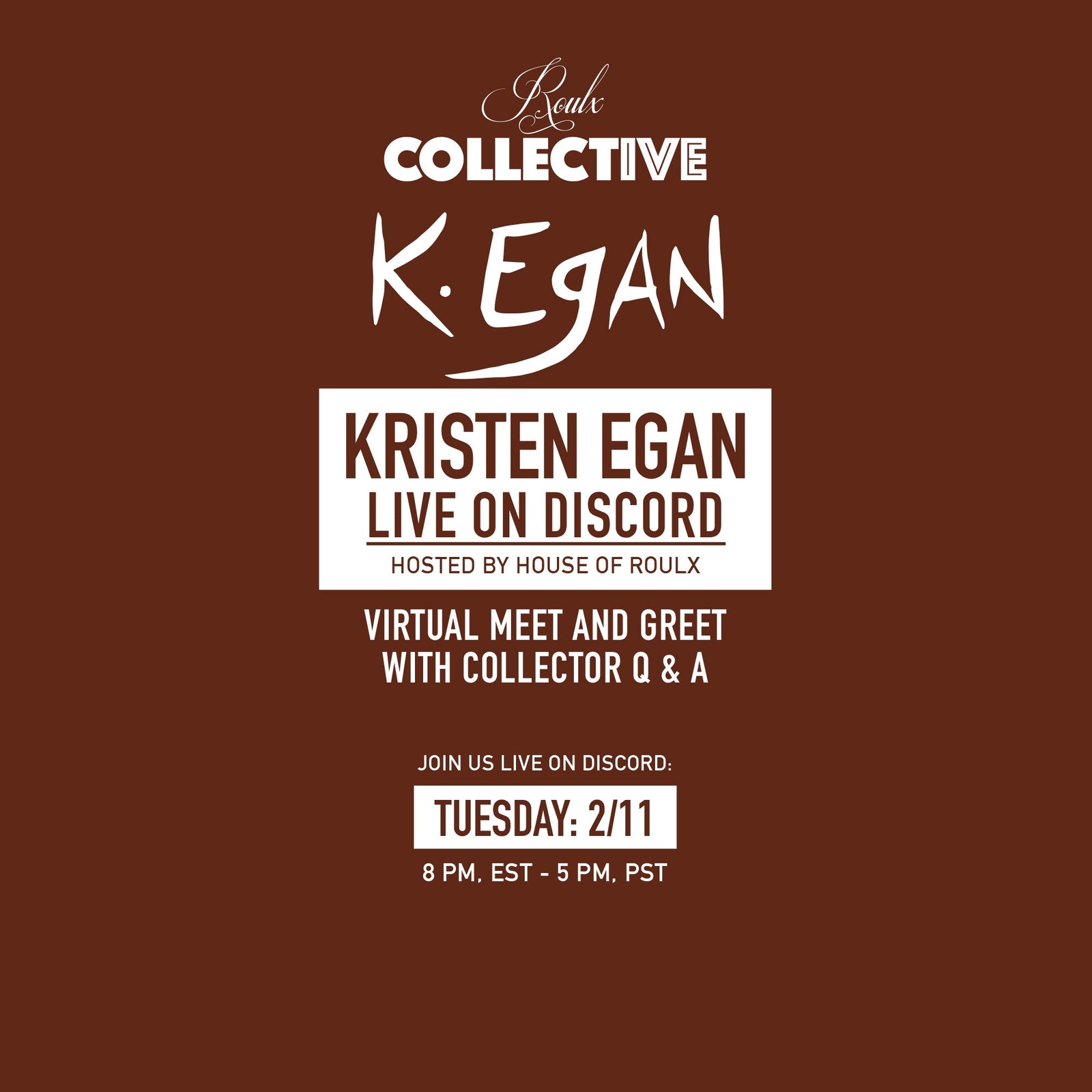VIEW OUR JOHN JOSEPH HANRIGHT COLLECTION

In Conversation with: John Joseph Hanright
Published on March 1, 2022
by Emerald Arguelles
John Joseph Hanright is a Boston-based multimedia artist who creates collage paintings that both revel in and unpack the allure of nostalgia.
Hanright sources vintage materials throughout multiple eras of American cultural and advertorial history to create contemporary pop paintings that feel both in and out of time. From advertising to comics, historical headlines to timeless icons—the imagery in Hanright’s paintings all realign to create an eye-catching tapestry of Americana and nostalgia.
Emerald Arguelles: Can you talk us through your discovery of working in multimedia?
John Joseph Hanright: I like the layering of multimedia and how different mediums can combine to strengthen a work. Every medium has its limits within my use, so this way I can expand within each and get my desired results.

EA: Your work combines magazines, comics and Pop Art, what is your process of collaging?
JJH: My process involves what I call “farming,” by which I mean the actual act or method of searching through up to hundreds of periodicals, magazines, etc. to find a particular image I am seeking. Once I have my images, I build a ground of layered ephemera on a panel. I will layer on top of this initial ground with additional ephemera, paint and cut out “text” from my sources.

EA: Pop culture seems to influence your work but more so pop culture in the 50s. What is it from that time that captivates you?
JJH: I am definitely drawn to the 1950s era and include it in most if not all of my works. For me, it’s a generation of wonder, hope, and positivity. I do use current ephemera, and enjoy doing so, but including some 50s era ephemera alongside current cultural images sort of grounds the work. Another example is how an interior designer, no matter how contemporary a house might be, more times than not incorporates some form of antique to help anchor a house. I guess I use vintage ephemera in the same way, to anchor us in the now.

EA: Do you work in a method or is it more fluid in your process?
JJH: I definitely have my method of starting work, but once a work is in the process the work itself evolves on its own. It may be adding more of an element, less of an element, whatever the direction the work ends up dictating. I tend to keep it fluid and support each individual painting’s path till completion.

EA: How has Andy Warhol influenced your work?
JJH: Warhol has influenced me insofar as celebrating “celebrity” and everyday objects as art. Without Warhol initially paving that road, I am not sure the art world would be as open to such works. He, along with Duchamp, truly opened doors that did not exist. With his influence, I can rely on his art as history and or reference in my work. The use of Marilyn Monroe, a Target icon, or even Coca-Cola in my work has an obvious nod to Warhol, as well as the use of multiple images in my work. I think referencing art history is my way of being in dialogue with any given artist, be it Warhol, Duchamp, Lichtenstein, or whomever.

EA: What would you like viewers to take away from your work?
JJH: I would like a viewer’s individual art experience to be that of discovery. My aim is to have my work act as a reflection of each viewer’s history and life to that moment. I use so many elements in my work, it is likely to strike a moment of connection with the viewer. I would hope they can continue to discover new experiences and memories every time they view the work.

